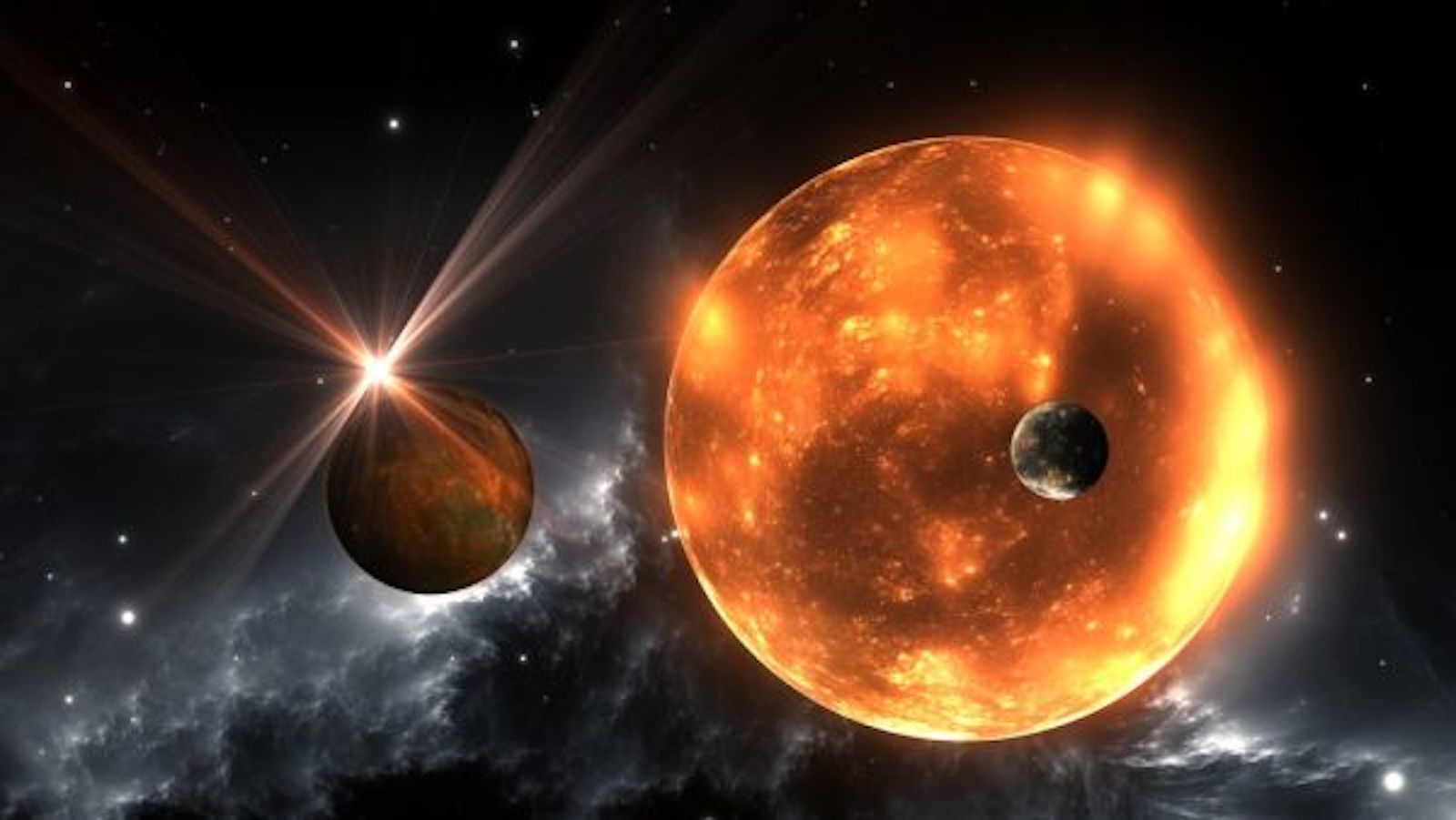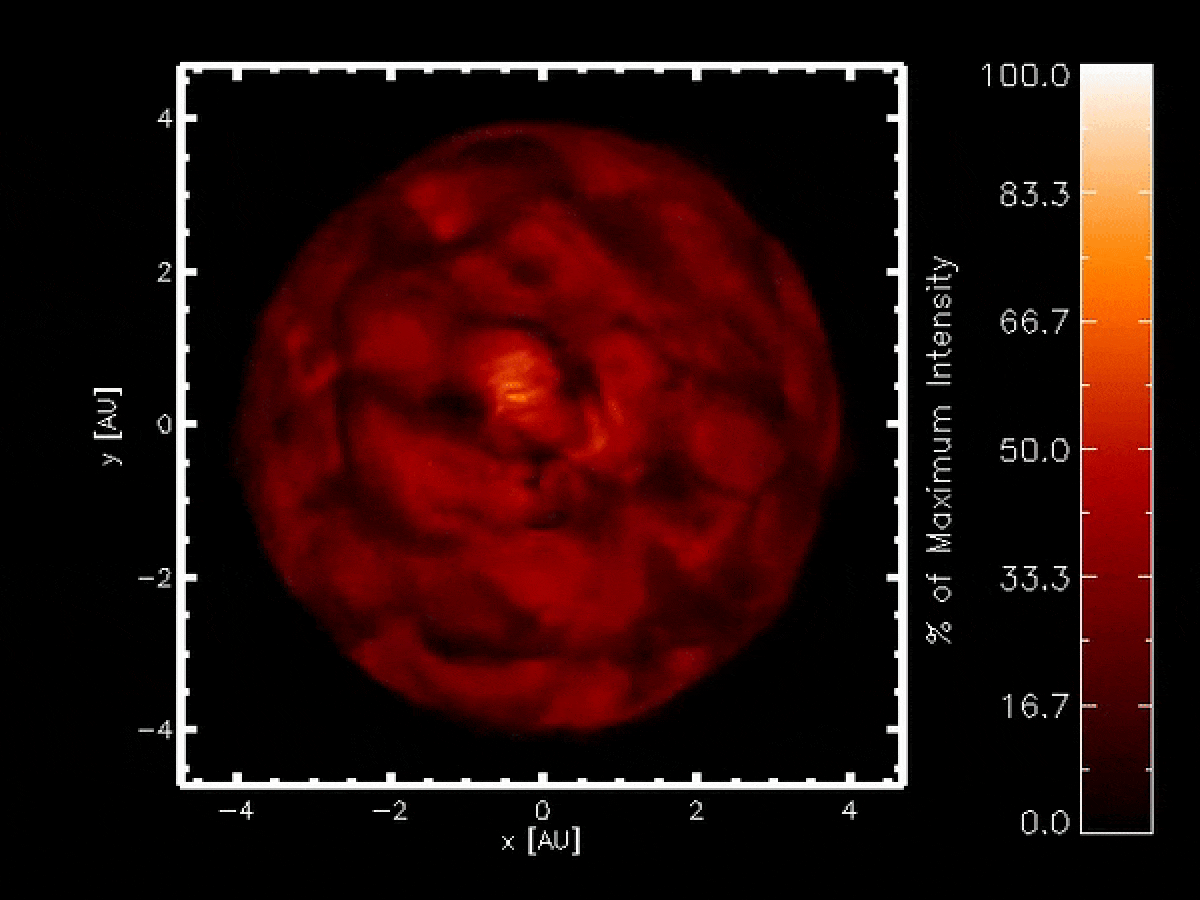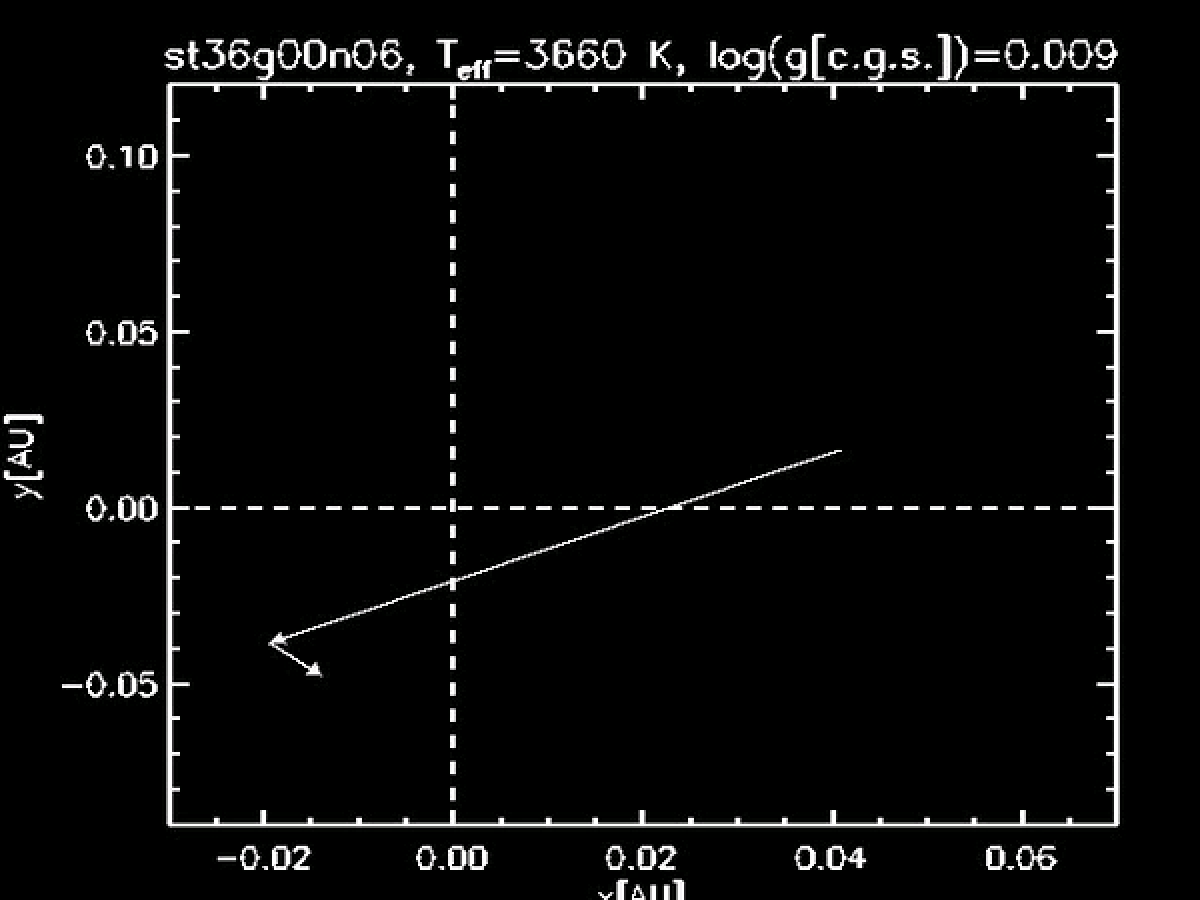
Red supergiant stars 'dance' because they have too much gas
The light they produce wobbles around, making them hard to pin down.

Scientists can finally explain why some massive stars appear to dance around in the sky even though they are not actually moving: The stars have unusually bubbly guts that cause their surfaces to wobble, thus changing the amount of light they give off, according to a new study.
The dancing stars are known as red supergiants, enormous stellar objects that have swelled up and cooled down as they've neared the end of their lives. These stars are about eight times more massive than the sun and can have a diameter up to 700 times that of the sun, which would be the equivalent of the sun's surface reaching beyond the orbit of Mars (engulfing Mercury, Venus, Earth and the Red Planet in the process). However, despite their colossal stature, these slowly dying behemoths can be extremely challenging to locate with precision.
Astronomers can typically determine the near-exact location of a star by identifying its photo-center, or the point at the center of the light it emits, which usually lines up perfectly with its barycenter, or gravitational center. In most stars, photo-centers occupy fixed positions. But in red supergiants, this point appears to wobble across the star, moving slightly from side to side over time. That motion makes it hard to pinpoint the stars' barycenters, which provide stars' exact cosmic addresses and don't move around like the jiggling photo-centers do.
Related: Red giant stars: Facts, definition & the future of the sun
In the new study, researchers compared the dancing red supergiants to smaller main sequence stars, or stars in the stable portions of their lifetimes. The scientists looked at stars in the Perseus stellar cluster — a region with a high concentration of stars, particularly red supergiants, located around 7,500 light-years from the solar system — using data from the European Space Agency's Gaia space observatory.
"We found that the position uncertainties of red supergiants are much larger than for other stars," study co-author Rolf Kudritzki, an astronomer at the University of Hawaii and director of the Munich Institute for Astro-, Particle and BioPhysics in Germany, said in a statement.
To get to the bottom of why these stars are so wobbly, the team created intensity maps of red supergiants' surfaces, calculating radiation measurements and using hydrodynamic simulations to show changes in the stars' 3D skins.
Get the Space.com Newsletter
Breaking space news, the latest updates on rocket launches, skywatching events and more!
The maps revealed that the surfaces of red supergiants are very dynamic, with lumpy gaseous structures that wax and wane over time, radiating more intense bursts of energy than other surface regions. These ephemeral yet high-intensity structures flare more brightly than the rest of the star's surface, which causes the photo-center to shift; if a bright structure flares up on the left side of a red supergiant, the photo-center also shifts to the left.

The massive size of red supergiants could explain why this might be happening. Most stars' outer shells are made up of thousands of adjacent convective cells — elongated pockets of rotating gas, mainly hydrogen and helium, that cycle hotter gas from the star's interior to its outer surface where it cools and sinks back down, somewhat like the bubbles inside a lava lamp.
But because red supergiants are so massive, gravity at their surfaces is much weaker than at their cores. Their convective cells are therefore much larger than in other stars, taking up between 20% and 30% of a red supergiant's substantial radius, or between 40% and 60% of its diameter. Bigger convective cells can transport more gas to the star's surface, which is what creates the intensely bright structures responsible for their shifting photo-centers, according to the study.
The team's data show that these surface structures can range in size, which determines how long they stick around. "The largest structures evolve on timescales of months or even years, while smaller structures evolve over the course of several weeks," lead study author Andrea Chiavassa, an astronomer at the Lagrange Laboratory in Nice, France, and the Max Planck Institute for Astrophysics (MPIA) in Munich, said in the statement. This means that the location of the stars' photo-centers is constantly in flux, he added.

Astronomers suspect that red supergiants play an important role in the evolution of galaxies; the enormous stellar bodies spit out large amounts of gas and heavy elements that are important in birthing new stars and exoplanets. The supergiants' bright and massive surface structures likely play a part in ejecting these vital materials, and future studies of the stars' wobbling could help resolve exactly how that happens.
"The dancing pattern of red supergiants in the sky could teach us more about their boiling envelopes," study co-author and MPIA Director Selma de Mink said in the statement. "We will be able to extract important information about the stellar dynamics and better understand the physical processes that cause the vigorous convection in these stars."
The study was published May 6 in the journal Astronomy and Astrophysics.
Originally published on Live Science.
Follow us on Twitter @Spacedotcom or on Facebook.
Join our Space Forums to keep talking space on the latest missions, night sky and more! And if you have a news tip, correction or comment, let us know at: community@space.com.

Harry is a U.K.-based staff writer at Live Science. He studied Marine Biology at the University of Exeter (Penryn campus) and after graduating started his own blog site "Marine Madness," which he continues to run with other ocean enthusiasts. He is also interested in evolution, climate change, robots, space exploration, environmental conservation and anything that's been fossilized. When not at work he can be found watching sci-fi films, playing old Pokemon games or running (probably slower than he'd like).
